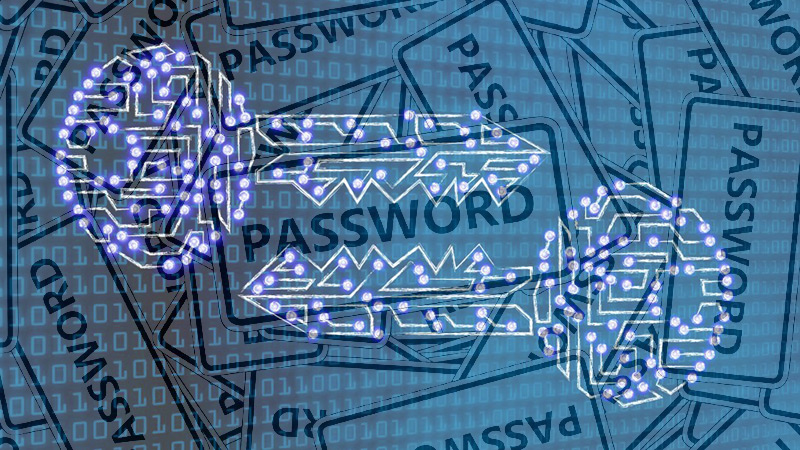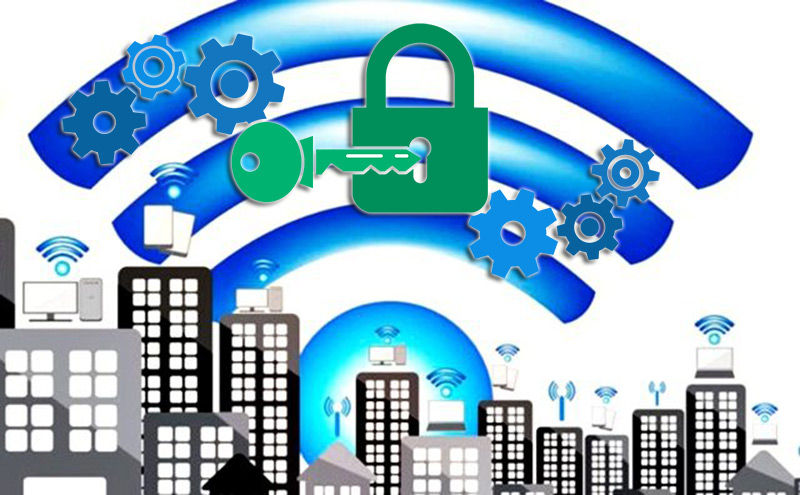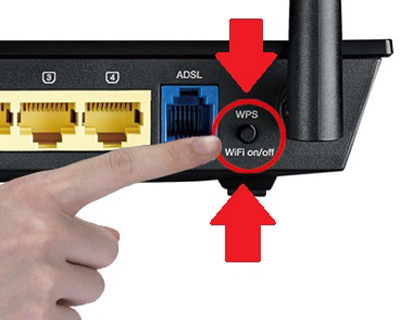
Index:
UPDATED ✅ Do you need to know which are the safest encryption methods for your WiFi network? ⭐ ENTER HERE ⭐ and discover them ✅ EASY and FAST ✅
Do you have a free router signal to share with your neighbors? Big mistake! Exposing your wireless network opens the door for malicious people to use it for fraudulent acts.
In addition, your private information can be leaked and do the unimaginable with it, which is why knowing security measures for your wireless networks is a fundamental part of improving your privacy and security on the Internet.
I write these lines as a recommendation create your own security measures on your network devices and learn the art of cryptography and how it applies to the variety of ciphers used to encode passwords.
What is an encryption technology to encode passwords?

The man in the search to protect his digital information from cyber attacks, has created a technology as a security measure, which consists of an encryption or protocol that allows hide the data and be displayed only with decryption.
This encryption technology is the basis for creating access passwords to different computers and devices. Beyond the protection of information against different attacks, it is also a method of authenticity of its origin, with the guarantee that it has arrived without any type of alteration in its content.
data encryption it is about transforming a data set in readable format to a hidden format so that it can be decoded only by the receiver. It becomes an indispensable instrument in the subject of digital information security since there are cyber attacks with special interests on such data. The creation of one trusted password It is the key point to make a protocol safe and inviolable.
What are the types of encryption for wireless network passwords that exist?

Every day the Wi-Fi connections they gain more boom both in homes and in offices and commercial premises. This is due to the practicality of its installation and the coverage it provides to the different mobile devices, which in reality have been responsible for leaving aside network connections, positioning the router and modem as a new trend to stay connected.
This growth brings with it security measures that must be considered, since the signal is not only concentrated in the place where you want to have it, but also expands around it, being able to be the means of navigation for adjacent people.
Therefore, it is essential to activate protocols or encryption of security to our routers or modems that allow us to keep out unwanted people who put our integrity and browsing speed at risk at all times.
To configure them it is necessary to enter the interface of the router or modem from the browser (Example 192.168.1.1.). Already being in it you can change the corresponding data. Before all that has been said, I want to leave you with the different protocols to keep your wireless networks protected at all times, let’s start:
WEP – Wired Equivalent Privacy
Standard that guarantees data confidentiality within WLAN systems based on the 802.11 standard, as well as controls access through authentication mechanisms.
WEP uses a secret key which is shared between a wireless station and an access point, all data sent and received on them can be encrypted using this key.
The type of protocol used depends on the bits used:
- 64 bit. Requires 10 characters in hexadecimal digits or 8 ASCII characters.
- 128 bit. Requires 26 characters in hexadecimal digits or 12 ASCII characters.
WPA – WiFi Protected Access
It is a standard developed to ensure access to the web via WiFi connection. It allows users to access information instantly from any wireless device through passwords.
When the modem enables WPA, it adopts the legitimacy of the user with the use of the server where the passwords are stored, and much like WEP, you need to enter the same password on all computers on the network. These are from 64 digits hexadecimal or 8 ASCII characters in a cipher 256 bit.
WPA2 – WiFi Protected Access 2
It is the improved version of WPA developed to provide greater protection for web access. Its encryption method is much more secure, so the password must be entered every time you want to connect a new device to the web. It has three classifications:
WPA2-PSK (TKIP)
WPA2 standard with TKIP protocol (Temporal Key Integrity Protocol). It is used on older devices that do not have the ability to support a WPAS-PSK (AES) network, but are still used. Authenticates data using 802.1x/EAP or PSK.
WPA2-PSK (AES)
WPA2 standard with highly secret data encryption capability using the AES encryption algorithm (Advanced Encryption Standard).
WPA2-PSK (TKIP/AES)
Default standard on many routers that uses WPA and WPA2 with TKIP and AES, providing compatibility between old and new devices.
WPA3 – WiFi Protected Access 3
It is the most recent standard created as a successor to WPA2. Uses 128-bit encryption and confidentiality of sending and forwarding. It replaces the exchange of pre-shared keys with simultaneous and equal ones, thus providing greater security. It also reduces the problem of weak passwords and facilitates the device configuration process without the visual interface.
What are the safest encryptions for our WiFi signal and why choose them?

As I told you before, it is essential keep wireless networks secure, since the modem signal spreads to the surroundings, being exposed to public use in general. You do not know the intentions of each neighbor or of the visitors, as a precautionary measure, I recommend you place a high security encryption on your Internet devices that only handle people you trust.
The development of telecommunications technology is creating new security protocols with higher degree of difficulties to be hacked by cybercrimewhich develops its skills to crack any password and manage to infiltrate any information.
For this reason, previous versions have been improved, thus giving you the opportunity to protect your WiFi signal from this group of people. Among the safest today are:
WPA2-PSK (AES)
The cipher “Advanced Encryption Standard” (AES) is an algorithm included in WPA2, which was not designed to protect WiFi networks but to protect classified documents. So far it is so safe that it has been used by different entities Government of the United States since 1997. Therefore, it is recommended to keep confidential data hidden from view.
WPA3 – Wi-Fi Protected Access 3
It is a more updated version of WPA3, created to improve the deficiencies of the previous one. It enhances the applied cryptographic protocols that protect the confidentiality of the data and offers greater protection against password theft attacks.
Also has Perfect Forward Secrecy (Perfect Forward Secrecy) a property that guarantees the protection of the keys used from being decrypted by hackers. These characteristics of WPA3 make it a safe encryption to apply in modems or modern routers compatible with it.
WPS: What is it and why should you disable it to keep your network secure?

Has it ever happened to you that you put such a complex password on your modem that you don’t even remember it anymore? Thinking about cases like this, the manufacturers of these types of devices make it easier for you to use the network with the implementation of WPS in their new models.
The Wi-Fi Protected Setup (WiFi Protected Setup) is a somewhat recent technology that allows the use of the Internet from the connected modem or router. It consists of an access that can be activated with just push the WPS buttonwithout the need to enter the password created for your protection.
Actually, the procedure to do it is quite simple:
- Press the WPS button on the router or modem.
- Over a period of time it will allow compatible devices to connect.
- Depending on the configuration of the router or modem, it will install it automatically or ask for a PIN that is attached to it.
With this mechanism it will be easier to connect to the Internet. But beware! You have to be aware of the precautions you must take. Leaving it open will give other people the freedom to take advantage of your signal in case of automatic installation, or you would even run the risk of having your PIN hacked.
Therefore, it is recommended to keep it disabled as a security measure to these neighbors or criminals who are used to doing cybercrimes. At the end of the day, this technology is to simplify your connectivity at a given time, not to create improvements in the security of your network.
Computing